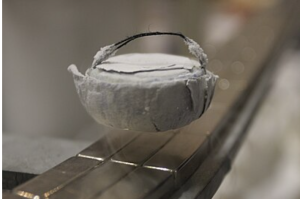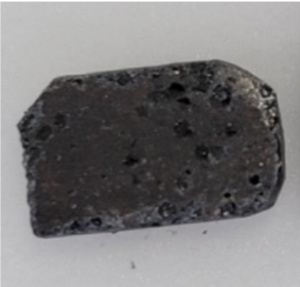Remember that Room Temperature Superconductor?
Do you remember that crazy news back in late July about a room temperature superconductor? You might remember that some researchers in Korea found a material that was able to show signs of superconductivity at just room temperature levels instead of extremely cold conditions. This would’ve revolutionized the worlds of health, computing, engineering, and so much more if only it was actually true. Here’s the story of how this “miracle tech” named LK-99 was actually found to be a bit of a bummer, and why it still might serve as a good lesson after all.
Background/ History
Superconductors offer no electrical resistance and no magnetic fields in a material. Most regular conductive materials have gradually lower resistances as their temperature drops, but superconductors drop straight to zero past a certain temperature. This allows for levitation with the Meissner effect, which you might have seen in a few mesmerizing videos of it. All these features of superconductors have very important applications in MRIs, since they require magnetic fields, turbines for efficiency and absorption and many more things. While superconductors might be seen as a magical material to solve the world’s problems, the main concern with its widespread adoption is the fact that it must have ridiculously cool temperatures in order for it to exist. Like, near the coldest possible temperatures in the universe cold.
Ever since the first superconductors were found in 1911, people have consistently found new ways to use superconductors and new developments to improve their efficiency. In 1933, Walther Meissner and Robert Ochsenfeld discovered that “in a superconductor the induced currents exactly mirror the field that would have otherwise penetrated the superconducting material – causing the magnet to be repulsed” (Eck). This is the Meissner effect as mentioned earlier. In 1983, Fermilab (yes, that Fermilab!) opened their first Superconductor collider named Tevatron. This brings us to now, with the news about a new room-temperature superconductor that could change the world…

Figure 1: Example of Meissner Effect with Superconductivity
The LK-99 Superconductor
In July 22, 2023, A few yet-unknown scientists at the Korean Quantum Energy Research Centre released a landmark paper stating that they found a new superconductive material that works at room temperature and ambient-pressure, named LK-99. LK-99 was a small, gray substance made of a special blend of copper mixed up with Apatite. Because of this innovation, superconductors would not have to be in lab-made freezing conditions for them to even work: they could convey electricity at regular temperatures (Lee 2023). Unfortunately, some researchers noticed a few problems with the study and its material that led to its demise.
After peer review from other experts in the field, it was eventually found that any levitation in LK-99 was not from the Meissner effect, but from regular Ferromagnetism from trace impurities of copper sulfide. Ferromagnetism is one of the five types of magnetism, and ferromagnetism is dictated by the material having all magnetic moments that point in the same direction (all moments point north/south). This means that ferromagnetic materials can strongly repel or attract other materials depending on moment direction, so this can often be misconstrued with superconductivity. LK-99 was also not reported to have any of the properties unique to superconductors, such as zero resistance or the Meissner effect, which put even more doubt in the hearts and minds of physicists. What’s worse is that the increase in superconductivity in LK-99 at 104.8oC was due to the copper sulfide in the LK-99, and not any superconductivity. While it may seem that the case is already closed, there is still much more to understand about LK-99 and its potential superconductivity.
An August 2023 study from Dr. Sinead M. Griffin of Lawrence Berkeley National Lab purported that a specific result of LK-99’s unique structure, that being its correlated isolated flat bands, could be a potential cause for superconductivity (Griffin 2023). If ‘correlated isolated flat bands’ sounded like a bunch of gibberish to you, that term means that the conduction pathways for electrons in LK-99 were in a specific order such that it allowed for superconductive properties. Griffin’s study was only a computer simulation, so multiple later findings found the structure used in Griffin’s study to be slightly different from the one in LK-99, leading to the difference in superconductivity. This finding seemed to be the nail in the coffin for any hopes of superconductivity in LK-99.

Figure 2: Photo of LK-99 Material
Conclusion
While this story might be seen as a big bummer to some (understandable), this should actually be seen as a testament to the scientific process and its strength in finding the truth. A large discovery was made, and scientists critiqued to make even more discoveries. The LK-99 craze proves that science gets stronger through incorrect information, not weaker. While this superconductor might all be a farce later down the line, it could also lead to new discoveries that might actually lead to the next thing, whether a room-temperature superconductor or something far greater.
Unfortunately, the LK-99 craze also illuminates the conflicting interests of science and the media. While science has exact language and takes years or decades for new discoveries, the media machine needs clickbaity titles and constant 24/7 news. Peer-reviewed studies and studies that disprove large innovations also often get much less coverage, as news channels have already moved on to the next big hit. The LK-99 study and its media response reminds us to worry about the dangers of ‘pop science’, and how coverage of science in a nuanced light is needed even if it may hurt our bottom line.
LK-99 should remind us to love science. Not ‘pop science’, not ‘cool new technologies that the world will forget about in the next two weeks’, science. LK-99 should remind us the importance of science and its scientific method, and it should remind us that the scientific method is used everywhere and the way we think must be influenced by the scientific method. The superconductor craze is but just one example of how science can be misunderstood by the media, but it should more importantly serve as an example to all of us on how we can think and inquire on the mysteries of our universe.
References and Sources
Source 1: Biswas, Som and Biswas, Srirupa, Current Status and Potential Uses of LK- 99, Room Temperature Semi-Conductor: An Update and Review (August 27, 2023). Available at SSRN: https://ssrn.com/abstract=4553146 or http://dx.doi.org/10.2139/ssrn.4553146
Source 2: Essén, H., & Fiolhais, M. C. N. (2012, January 20). Meissner effect, diamagnetism, and classical physics—a review. American Journal of Physics, 80(2), 164–169. https://doi.org/10.1119/1.3662027
Source 3: Image Window. (n.d.). Image Window. http://www.superconductors.org/History.html
Source 4: Lee, S., Kim, J. H., & Kwon, Y. W. (2023, July 22). The First Room-Temperature Ambient-Pressure Superconductor. arXiv.org. https://arxiv.org/abs/2307.12008v1
Source 5: Griffin, Sinéad M. “Origin of Correlated Isolated Flat Bands in Copper-Substituted Lead Phosphate Apatite.” ArXiv.org, 3 Aug. 2023, arxiv.org/abs/2307.16892. Accessed 8 Nov. 2023.